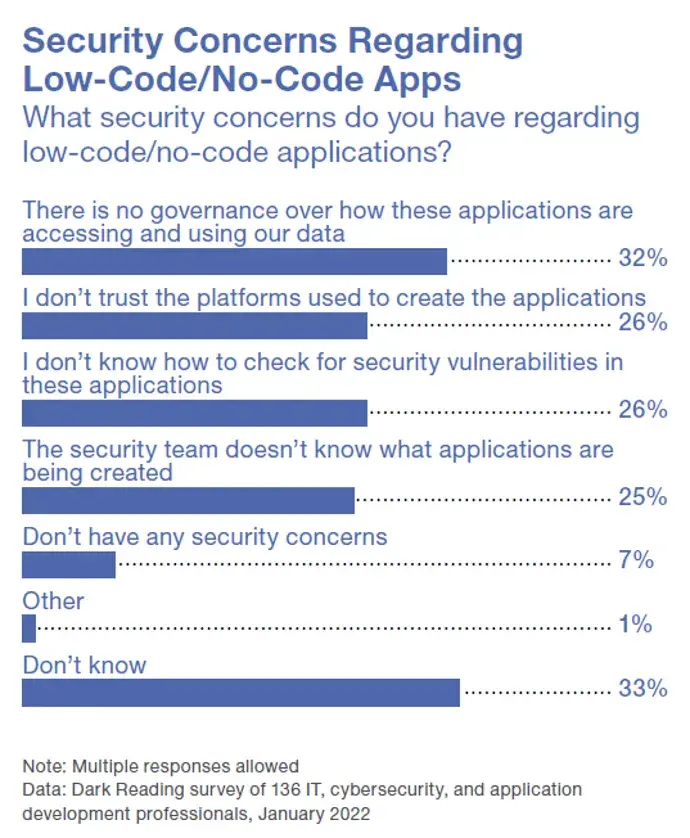The benefits of low-code
1. Cost-effective
While the old traditional code (High-code, Traditional code, or coding from scratch) takes a long time and effort to complete and necessitates a team of developers, the project completion costs are higher. This makes it difficult because not all businesses, particularly SMEs (small and medium enterprises), have such a budget to work with.
Compare high-code to low-code, the benefits of the latter are much obvious. It requires fewer resources and is friendly to both coders and non-coders. Because low-code has a built-in code base, users don’t need to write much or have in-depth knowledge of the code; simply drag-and-drop, which significantly reduces operating costs.
2. No programming skills needed
Experienced coders are an asset to any team, but they can be costly and difficult to find in recent years (highly competitive to get them onboard too!). Thanks to these top low-code development platform, even your citizen developer can do basic coding and deployment on their applications, no matter what level they are in.
For example, the marketing team can use a low-code development platform to optimize their web performance. Their job is to maintain and update the website or mobile app for engagement. Yet, imagine the time they spend if they need to contact a developer whenever they want to change something on the interface.
Using a low-code platform, the marketing team can actively and independently alter the interface with new content, imagery, design, and more. Coders only assist and advise when necessary. This is low-code benefits is time-saving and practical solution for non-specialist departments.
3. Faster development
Low-code development tools handle the tedious, time-consuming steps to help you build faster. With lower entry barriers, you’ll have more hands on deck to help speed up the process.
Low-code app development enables non-technical users to create minimal viable products (MVP) that you can test before involving your developers, saving you time and money. If an MVP fails, discard it and move on.
Another available feature of the low-code development platform is drag-and-drop. This makes it one of the most convenient ways to manually edit, add, and remove details. LC also automatically back up finished products to create collections of reusable design components. Users can use it as a free template to make changes based on previous designs without re-coding.
Faster development leads to more rapid deployment, which results in happier customers and a higher ROI (return on investment). This is a long-term low-code benefits for businesses.
4. Fight talent shortage
From the above benefits, we can see low-code is a great alternative strategy to fight the high demand of qualified technicians. Of course, this doesn’t mean low-code will replace them. While you are still looking for the right candidate, having a low-code tool can help your team to continue digital transformation, not being disrupted by other factors.
At the same time, startups and SMEs usually face technical debt when building digital products. It happens when you skip certain step during the development to fasten the time-to-market. Yet, in the long run, the “abandon pieces” can become a double-edged sword and you have to spend more time to fix it. With low-code, you can fasten these process without skipping it, hence reduce the risks of technical debt.
5. Simplify automation
For developers, low-code can automate your development process by simplifying front-end development so you can spend more time on standardize a smooth back-end and customization.
Most businesses use low-code to automate their workflow as well, all thanks to:
- Pre-build code blocks and modular architecture that you can break down your workflow into small chunks and connect processes between departments. If there’s any modification to a workflow, it won’t effect the other.
- Easily edit and iterate each process to make it best fit your business strategy.
Furthermore, the benefits of low-code platforms are that prebuilt platform integrations and API openness enable any digital business process automation. Explore the distinctive advantages of low-code automation in our article “How Does Low-code Workflow Automation Stand Out?“
6. High flexibility
This low-code platform benefits assist in making the necessary changes and adapting any website or app to the needs.
This can be done without complicated hand-coding; simply enter the platform’s low-code editor and make all the changes visually. Low-code development platforms provide developers with all the tools they need to iterate and edit existing business processes.
This makes it easier to have all the project documentation and revision history available, so anyone can quickly understand everything. Furthermore, implementing a similar project can be simple for anyone.
7. Seamless collaboration
Traditional app development divides your team into two groups: coders and non-coders. Business teams (non-coders) plan the vision and assign it to developers (coders), but the project scope can sometimes get lost in translation.
Low-code eliminates these communication silos, allowing both parties to contribute in real-time. Everyone from your executive team to your front-end developers can participate in bringing the application to life.

It also eliminates the need for back-and-forth processes and long wait times between handoffs. Teams can truly collaborate rather than doing and waiting for approval and repeating.
You are also not required to work on someone else’s timetable. If you need a solution right away, you can build an MVP rather than wait until the next sprint to get on the radar of your development team.
8. Agile prototyping
One of the advantages of low-code platform is that it allows anyone to create prototype solutions for similar projects quickly. The prototype can be compared, analyzed, and tested to determine which option is best for the company.

Once a decision has been made, the project can be forwarded to advanced development for scaling and integration with other solutions.
Explore “Low-code And Agile Development: A Match Made In Heaven” to harness the full potential of this winning combination
9. Easy modernization & integration
Another significant advantages of low-code development is integrating legacy mainframe systems. Low-code platforms are well known for increasing app development agility since they provide the same benefits, such as faster development, more resilient solutions, and the ability to adapt quickly to new requirements. You won’t have to worry about your project being left outside without the ability to scale.
10. Low maintenance
By abstracting the tedious plumbing work from day-to-day development, low-code development alleviates the burden of software maintenance. There are far fewer bugs and integration issues to deal with now that components are standardized, pretested, and ready-made. With this low-code development benefits, developers can focus on innovative work that drives greater business value by spending less time on maintenance.
11. Control Shadow IT
Shadow IT happens when an individual or a department uses an unapproved tool for daily work. Your organization can be exposed to security risks, especially if said employee import internal data to the applications.
Low-code platform keep everything under control, by having a system to centralize them all. You can build any application using low-code, or integrating it with a third-party, making sure your data is intact and not out of watch.
However, exploiting low-code can also create shadow IT, it’s when your employees keep produce applications to use for their own goods, without any guidance from IT. This situation is avoidable if your employees are educated about the dangers of shadow IT and aware of double-checking with the specialist in the field before launching it.
Another tips is to set up a Governance on using low-code, to help you manage its usage.
12. More business innovations
By cutting down time on basic coding applications, your tech team will have more time to invest in other developments that are more impactful.
On the other hand, many businesses allow employees to use low-code platforms (including non-technical positions) to turn their ideas into reality. At the same time, the tech team will only focus on optimizing and developing the ones that stand out. This works as a test for companies to search for the best-suited innovations in the sea of ideas and save resources on what matters.
Utilize the power of low-code, businesses across industries and of all sizes has found success from digital transformation: Read the case of Coca Cola, Toyota and many more!
The disadvantage of low-code
1. Vendor lock-in
One of the most common disadvantages of low-code automation is vendor lock-in. Most businesses believe they won’t change their minds once they choose a vendor. The result is always different; now, they must rely on a single vendor.
Thus, choosing a suitable vendor and a flexible low-code platform is essential. Specific low-code automation platforms provide clean, standardized code that can be used in collaboration with other vendors. Before purchasing the tool’s license, it is critical to read the vendor’s policy:
- Some vendors will stop supporting your application after you stop using it.
- Some vendors, on the other hand, can provide migration support to transfer your code and data once you stop using the application.

2. Limited complex customization
Most low-code allow you to add customized JavaScript and Python code, only a few support the others. It can perfectly work with basic needs. But if you have an enterprise-grade application or complex product, your best bet is custom software.
Your software development team must also ensure the added ones are compatible with the platform’s source code. As a result, it is critical to understand the customization limitations before selecting a low-code platform for your company.
4. Low-code is not as easy as you think
One disadvantage of a low-code platform is it’s not that simple. Even though low-code was designed to be an alternative to traditional development that small teams can use, it still requires basics coding knowledge.
Low-code is indeed less complicated than hand coding. It can enable citizen developers to create applications that require minimal programming skills, but that doesn’t mean that knowing some programming languages isn’t beneficial.
5. Ownership of source code
Not every platform allow users to export source code, even if the users added new ones. Some, on the other hand, allow you to own it, which you can modify and run independently. However, the pre-built code might still subject to licensing terms or dependencies on proprietary libraries or runtime environments can restrict you.
The best way to know is checking the terms of services and licensing agreement. And before buying anything, check with your vendor first. This drawback of low-code make many businesses hesitate to buy. Our suggestion is once again, to leverage low-code for simple projects and processes, that’s what we facing the potential of losing the app, you can easily rebuild it.
6. Security
Named as the weakest link of low-code, security is the main concern of many users. You can control this drawback of low-code as well, since it’s under the vendor’s management.
Based on a Dark Reading Survey, here’s the top questions:

Most low-code vendor are claiming to work on it. Nevertheless, you can adopt some of these security strategy to protect your low-code based application, while still monetizing the benefits of low-code.
Wrapping up
Businesses worldwide have begun to implement low-code benefits to digitize their operations. When used in conjunction with a traditional approach, it allows for faster and more efficient application development. Every new technology has its own benefits and drawbacks that must be considered carefully before deployment. Synodus recommend that adopting new technology for your business should be based entirely on your company’s goals and needs.
More related posts from Low-code blog you shouldn’t skip:
- Potential of Low-code in Healthcare for Digital Transformation
- Utilizing Low-code for Customer Services: How to & Use Cases
How useful was this post?
Click on a star to rate it!
Average rating / 5. Vote count:
No votes so far! Be the first to rate this post.




